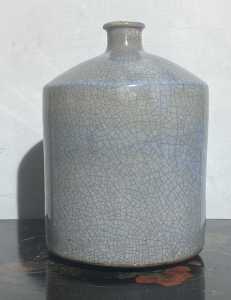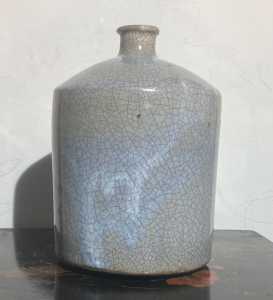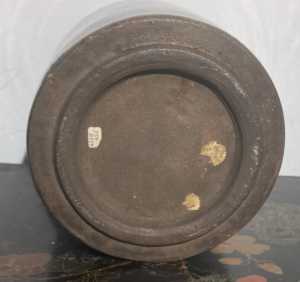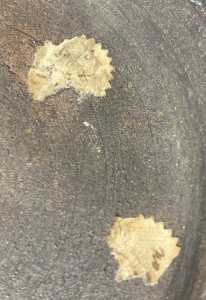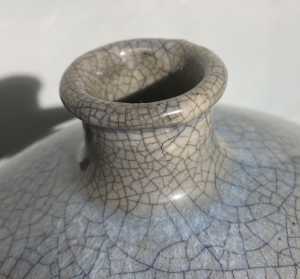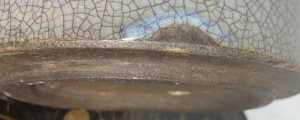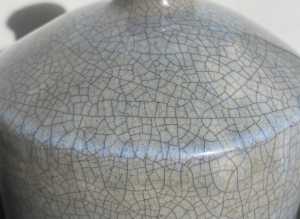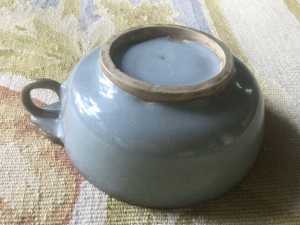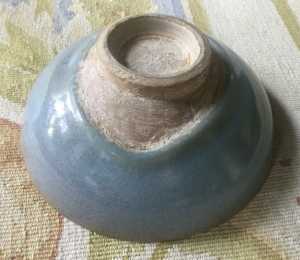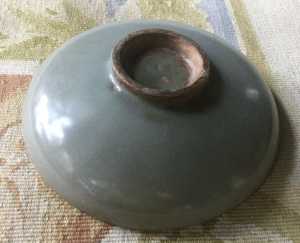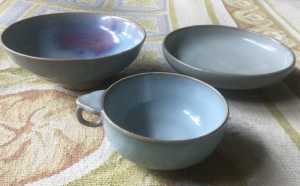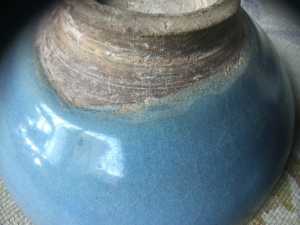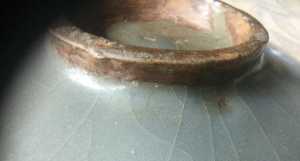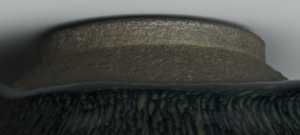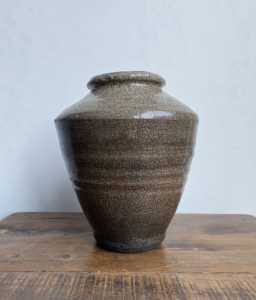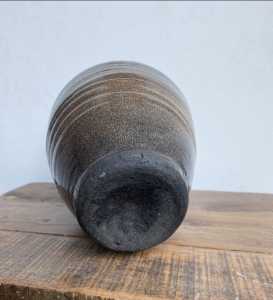The Chinese and Asian Art Forum. For Fans, Collectors and Dealers.
 Basic Rules For the BidAmount Asian Art Forum: Talk about whatever you want. You can even discuss and offer things that are for sale if they are authentic. Maximum image file size per post is 2 MB. Images of 700pxl x 700pxl are optimal if saved at a medium resolution. Be respectful of others and enjoy yourself. Click the YouTube link for a brief tutorial on using the forum. You can also EMBED Videos by cutting and pasting from You-Tube, Vimeo etc.
Basic Rules For the BidAmount Asian Art Forum: Talk about whatever you want. You can even discuss and offer things that are for sale if they are authentic. Maximum image file size per post is 2 MB. Images of 700pxl x 700pxl are optimal if saved at a medium resolution. Be respectful of others and enjoy yourself. Click the YouTube link for a brief tutorial on using the forum. You can also EMBED Videos by cutting and pasting from You-Tube, Vimeo etc.
NOTE: To post an item or add a new post, click open the category title from the FORUM LIST, and CLICK the Blue ADD TOPIC button.
Hello, all!
I think way back when I first signed up for this forum I posted a pic or two of this jug I own. Yesterday, I was re-designing my living room collection and I cam across it, so I'm posting additional photos to see if anyone can help narrow down the age/origin of it.
I've been resisting having a TL test because it looks so awful to drill a hole (even a small one) into the porcelain. I also haven't run any photos by Christie's (yet) as I really have no inentions of selling it (yet).
To me, the jug seems to have a lot of the qualities of Junyao wares. I think there is a 'sky blue' glaze, and the manner that there are a few irridescent swirls of irregularly thick glaze, and a retraction near the foot look a lot like Junyao. Also, the iron rich paste that turns dark brown/black on the foot seems to be found mostly in Junyao, but I think the Jian ware (hare's fur) also has the same kind of paste. The vessel is heavily potted, so again, this seems to fall inline with Junyao.
There is one retraction near the foot...my thumb fits nicely into the space when I'm holding the vessel in the palm of my hand. It looks to be formed from the artist's handling of the vessel prior to firing of the glaze.
What I think is unusual about the glaze with respect to being Junyao is the defined crackle. I do see some clear crackle in Junyao, but not the black and clear as seen in my jug.
In that respect, the crackle is more like Geyao ware. However, from the examples I've been looking at, I don't see the dark paste.
The piece was acquired by a client of mine that I bought nearly every piece of Asian art he had.... pieces ranged in age from Tang to Republic, and overall the collection was very high quality, and several pieces made it into auctions in NY. The prior owner acquired many pieces from antique shows throughout the USA during the 1950-80's, but he was unable to give me a specific date or location.
The two star burst labels on the bottom are very old, with ink from a fountain pen. There is one word that looks like "J-ya-"...Is that JunYao? Maybe I'm reading what I want to see.
I had shown this piece to once to my best client who offered to buy it, but insisted I name a price and would not comment on what he thought the age was. He and I have a high trust relationship, so we have a code that we will not lie to each other, but that does not mean we have to volunteer our opinions on age/value. Based upon this interaction, I suspected the piece is at least Ming dynasty.
The jug shape is a bit of a mystery. It looks very much like a short necked mallet vase, or perhaps a cylinderical meiping jar. I did once find a Japanese saki jug in a museum collection that came from China during the Song dynasty, but I foolishly forgot to save the link, and I've never been able to find the link again... perhaps I dreamed it.
Anyway....I hope these photos are sufficient.
If I had seen it without reading what you wrote, my first thought would have been Japanese. I imagine the base must be about 7 inches from it being able to fit in your hand, so height about 12?
The label looks like it says Sage to me. Sorry, that isn't very helpful.
I can't find anything of this shape to compare with. It is like an old scrumpy jar without the handle. Can't have been easy to pour from.
The closest I got in asian wares was a 19th c bale-shaped tokkuri - very nice but other than a similar shape, of no use at all.
Hopefully, some one else will know something. I shall be looking forward to reading other comments.
The one label looks like Sagi, which is very close to Saki, so I wonder if you might have been onto something with that earlier reference? I have suggested this before, and you seemed to be resistant for some reason, but I would make the same suggestion to anyone else on this forum as well: perhaps check with Peter, as he may have run across one or two like it in all his years in the business.
Tim,
I am not sure about this one being Jun ware. The shape would be very atypical for the Song period. I have sometimes seen a bit of crackle on some Jun ware examples. I have never a seen a Jun piece with such extensive crackle that has been stained dark. The clay looks very dark also. The foot rim on Song examples are very sharply squared. In the morning, I will send you pictures of my Jun ware examples.
@william Looking forward to the photos. Thx! The jug seems to be a complete mystery. The most I can say is it seems really old.
The surface of the glaze, which you might not be able to see in the photos, has countless fine scratches and micro chip.... very naturally distributed. I've seen this kind of exterior wear in a few Yuan celadon vases that I've had. But, that doesn't prove anything with regards to country of origin, and not much in the way of age.
Attached are some photos. The bowl with the purple splash is probably Jin/Yuan while the other two probably fall into the Song era.
@william Yes, much better! So, look how these photos compare..... doesn't the paste look similar? The manner of the glaze retraction?
and here is the foot to the MET museum's 'hare's fur' cup:
The dark color does not appear to be a chemical addition on my jug, but rather the high iron content in the paste (as it should be for Junyao).
But, I don't disagree... unusual shape and crackle. Julia mentions a tokkuri (saki bottle), which I think is correct for its form. But, I seem to remember that during the Song dynasty, a lot of wares were exported to Japan because they were quite fond of the Song enamels.
From the look of the labels, the piece has been in collectors hands since the 19th c. That proves nothing, but seems to imply it had some historical value as an antique.
My eyes see the very same paste between all three examples.
After reviewing some of my photos, I think we are running into camera issues with color tones. For example, the bowl with the purple splash has in sunlight a somewhat coarse paste texture with a light tan color unlike the somewhat light grey color of the photo. The other bowl with the loop (based on a metal cup design) has a more fine, compact, whitish paste. The dish has in my opinion been over fired and that has burned the foot rim’s fine, compact paste (this also turned the glaze a lighter grey/green color instead of the usual blue). Your bottle’s glaze reminds of some type of guan glaze.
I think the shape is the key for dating, but that is proving difficult.
@julia you didn’t expect an easy one from me did you?
Thanks for visiting "The BidAmount Asian Art Forum | Chinese Art"
If you sell on eBay, or have a shop feel free to post images and descriptions and links.
Check back often for discussion about the latest news in the Chinese art and antique world. Also find out about the latest Asian art auctions at Sotheby's, Christie's, Bonhams and Tajans.
Auction results for: fine porcelain, ceramics, bronze, jade, textiles and scholar's objects. As well as Japanese, Thai, Vietnamese and other Asian cultures.
Thank you,
Peter Combs
Topics and categories on The BidAmount Asian Art Forum | Chinese Art
Kangxi vases, Kangxi dishes and chargers, Kangxi ritual pieces, Kangxi scholar's objects, Qianlong famille rose, Qianlong enamels, Qianlong period paintings, Qianlong Emporer's court, Fine porcelain of the Yongzheng period. Chinese imperial art, Ming porcelain including Jiajing, Wanli, Xuande, Chenghua as well as Ming jades and bronzes.
The BidAmount Asian Art Forum | Chinese Art
A free Asian art discussion board and Asian art message board for dealers and collectors of art and antiques from China, Japan, Korea, Thailand, Cambodia, Vietnam and the rest of Asia. Linked to all of the BidAmount Asian art reference areas, with videos from plcombs Asian Art and Bidamount on YouTube. Sign up also for the weekly BidAmount newsletter and catalogs of active eBay listing of Chinese porcelain, bronze, jades, robes, and paintings.
The art of calligraphy - and for the ancient Chinese it certainly was an art - aimed to demonstrate superior control and skill using brush and ink. Calligraphy established itself as one of the major Chinese art forms during the Han dynasty (206 BCE - 220 CE), and for two millennia after, all educated men were expected to be proficient at it.
The Museum’s collections of Asian art span nearly five millennia and encompass the cultures of China, the Himalayas, India, Japan, Korea, and Southeast Asia. In 2007, the Museum launched an initiative to create dedicated galleries for the collection, beginning with a gallery for the arts of Korea ...
Chinese art is full of symbolism, in that artists typically seek to depict some aspect of a totality of which they are intuitively aware.
China Online Museum is the finest online museum of Chinese art. It features Chinese calligraphy, painting, ceramics, bronzes, carving, and other artworks.
Chinese Ceramics & Works of Art. Overview Upcoming auctions Contacts Auction results ... Christie’s sales of Chinese ceramics and works of art showcase centuries of Chinese history. Held throughout the year in London, New York, Paris and Hong Kong, they attract a wide audience of collectors and connoisseurs vying for pieces as diverse as ...
Explore Asian Art Week. Contact the Specialist Department. Chinese Paintings ... Senior Specialist, Head of Sale. [email protected]. Tel:+1 212 641 5760. Bid in-person or online for the upcoming auction:Fine Chinese Paintings on 10 September 2019 at New York. Bid in-person or online for the upcoming auction:Fine Chinese Paintings on 10 ...
Discover an abundance of must-see art from all corners of a vast continent at Christie’s NY Asian Art Week. From contemporary classical and Chinese paintings to works with exemplary provenance from the Art Institute of Chicago, our Rockefeller Paza galleries will be full of ancient treasures and contemporary masterworks in a salute to the vibrant arts of Asia.
Sold to benefit The Art Institute of Chicago’s Asian Art Acquisition Fund, the sale features 84 lots with a focus on Ming and Qing porcelains, and offers a rare insight into the taste for collecting Chinese ceramics and works of art in the Midwest from the end of the 19th century through the 1980s. Highlights include two Wanli wucai garlic-head vases, a Qianlong mark and period, blue and ...
Specialist, Chinese Paintings, Christie's London Dr Malcolm McNeill is a Specialist in Chinese Paintings at Christie’s, based in London. He previously worked as an assistant curator of the Chinese collections and the Victoria and Albert Museum in London, as a researcher at the British Museum, and as a translator and tour guide at the National Palace Museum in Taipei.
The Christie's Education 2020 Conference: The Chinese Art Market 18 Jun 2019 Christie’s Education is delighted to announce our first international academic conference in Asia which will take place in Hong Kong from 26-27 November 2020 at the Hong Kong Convention and Exhibition Centre and will run in parallel with Christie’s Hong Kong Autumn Auctions.
The summer Chinese Art sale in Hong Kong will feature works of art from several private collections, including Qing porcelains and textile from the collection of the legendary Chinese art dealer A. W. Bahr (1877–1959), fine gilt bronze Buddhist sculptures from an old Hong Kong collection, an East Asian collection of Qing dynasty wine cups and jades, and a Japanese collection of Song ceramics ...
Sotheby's Chinese Works of Art Department holds two auctions each year in London, New York, Hong Kong and Paris.
Chinese Art - View Auction details, bid, buy and collect the various artworks at Sothebys Art Auction House.
With more than 340 Chinese works of art dating from the Neolithic to the Republic periods, highlights of this sale include a selection of Qing Imperial monochromes from the collection of Arnold and Blema Steinberg, early ceramics from the Art Institute of Chicago and Chinese porcelain and works of art from the collection of Henry Arnhold.
Results: Sotheby's Asia Week achieved $52.4 million in six strong auctions, exceeding pre-sale estimates. With 76.5% of lots sold and 60.3% of lots surpassing high estimates, the Asian art sales at Sotheby's indicate continued collector interest in the finest works of art from China, India and and the Himalayas.
Today's sale of Important Chinese Art will proceed as planned with sessions at 10 AM and 2 PM EDT. Sotheby's will be monitoring the weather conditions throughout the day and will be available to coordinate alternative bidding options should conditions make it difficult for clients to attend the auction in person.
Bonhams Chinese Art department is renowned for offering the finest works of art representing the richness and breadth of China's artistic heritage, particularly Imperial porcelain, white and spinach green jades, cloisonné and Buddhist art. Specialised international auctions are held globally, including London, Hong Kong and San Francisco.
Bonhams : Chinese Works of Art We use cookies to remember choices you make on functionality and personal features to enhance your experience to our site. By continuing to use our site you consent to the use of cookies. Please refer to our privacy and cookie policies for more information.
Bonhams Fine Art Auctioneers & Valuers: auctioneers of art, pictures, collectables and motor cars. We use cookies to remember choices you make on functionality and personal features to enhance your experience to our site. By continuing to use our site you consent to the use of cookies. ... Chinese Art (US) General enquiries
Bonhams : Fine Chinese Art We use cookies to remember choices you make on functionality and personal features to enhance your experience to our site. By continuing to use our site you consent to the use of cookies. Please refer to our privacy and cookie policies for more information.
Bonhams Fine Art Auctioneers & Valuers: auctioneers of art, pictures, collectables and motor cars Bonhams : Asian Art We use cookies to remember choices you make on functionality and personal features to enhance your experience to our site.
Bonhams are international auctioneers of fine Chinese and Japanese art. We specialise in rare Imperial and Export Chinese ceramics and works of art, as well as Japanese ceramics, fine and decorative works of art from the Neolithic Period to the 20th century. View on map
Bonhams Fine Art Auctioneers & Valuers: auctioneers of art, pictures, collectables and motor cars. We use cookies to remember choices you make on functionality and personal features to enhance your experience to our site. By continuing to use our site you consent to the use of cookies. ... Asian Art Bonhams. Work. 22 Queen St.
